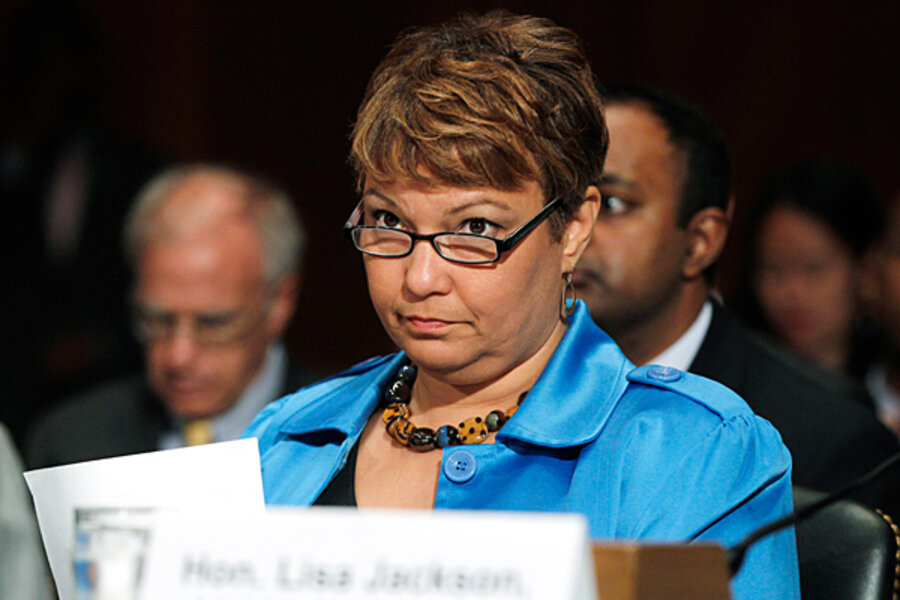Supreme Court throws out back-door bid to curb global warming
Loading...
| Washington
The US Supreme Court dismissed a pioneering environmental lawsuit on Monday that sought to use public-nuisance law as a way to force five major power companies to reduce their emissions of greenhouse gases in a campaign to fight global warming.
In a unanimous decision, the high court said the federal Clean Air Act and the actions of the Environmental Protection Agency (EPA) displace any common-law right to have federal judges develop and police enforcement of carbon dioxide pollution standards.
“Congress designated an expert agency, here, EPA, as best suited to serve as primary regulator of greenhouse gas emissions,” Justice Ruth Bader Ginsburg wrote for the court. “The expert agency is surely better equipped to do the job than individual district judges issuing ad hoc, case-by-case injunctions.”
She added: “Federal judges lack the scientific, economic, and technological resources an agency can utilize in coping with issues of this order.”
The decision is setback for environmentalists who are concerned about the pace of government regulation of greenhouse gases. It marks a victory for corporations and businesses concerned about the uncertain costs of future environmental regulations.
“Today’s decision ensures that the public and private utilities named as defendants in this case, as well as other companies that provide vital services to the public, can continue to operate without the threat of federal ‘climate change tort litigation,’ and the substantial costs and risks to productivity these claims present,” said Peter Keisler, who argued the case at the Supreme Court on behalf of the power companies.
The lawsuit, filed on behalf of six states, New York City, and three conservation land trusts, accused five power companies of being among the largest greenhouse-gas polluters in the country – emitting 650 million tons of carbon dioxide a year.
The suing states – Connecticut, California, Iowa, New York, Rhode Island, and Vermont – said such emissions amounted to a public nuisance. They asked a federal judge to order the companies to end the nuisance by capping their emissions and developing a plan to systemically reduce their contributions to greenhouses gases.
The issue before the court was whether the litigation should move forward in the courts or be dismissed in favor of leaving the thorny issue of regulation of greenhouse gases to the EPA under the Clean Air Act.
The Second US Circuit Court of Appeals in New York ruled that the case could move forward.
On Monday, the high court reversed by an 8-to-0 vote. “The Second Circuit erred, we hold, in ruling that federal judges may set limits on greenhouse gas emissions in face of a law empowering EPA to set the same limits,” Justice Ginsburg wrote.
Justice Sonia Sotomayor did not participate in the case because she was on the Second Circuit panel that heard the case prior to her nomination to the Supreme Court.
The high court addressed a similar issue in 2007 when it ruled 5 to 4 that states could sue to force the EPA to regulate greenhouse gases under the Clean Air Act. At the time, the EPA, under the Bush administration, had taken the position that the Clean Air Act did not authorize the regulation of greenhouse gases. The high court disagreed, ruling that the law did regulate excessive carbon-dioxide emissions.
Since then, the EPA has taken a more aggressive approach, issuing a final rule on emissions from light-duty vehicles and moving forward on a similar rule for medium- and heavy-duty vehicles.
Ginsburg noted in her opinion that the agency is implementing requirements that the best available pollution-control technology be used at major greenhouse-gas-emitting facilities that are new or modified. In addition, she said, the EPA has begun rulemaking to set new limits for fossil-fuel power plants. A proposed rule is expected by July 2011, with a final rule in May 2012.
An important side issue in the case was whether the states and/or the conservation land trusts have legal standing to bring the nuisance lawsuit. It is a key question because, without standing, the courts would lack jurisdiction to hear such cases. The justices split on that question 4 to 4. The tie vote meant that the portion of the Second Circuit’s decision – that the groups did have legal standing – is affirmed.
The five companies named in the lawsuit were: American Electric Power Company and a subsidiary, Southern Company, Xcel Energy Inc., and Cinergy Corp.
The case is American Electric Power v. Connecticut (10-174).





